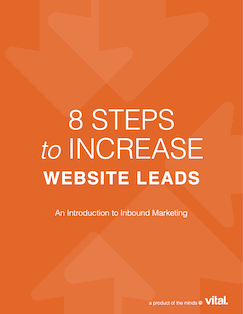Here are a few helpful hints that can steer both of your teams down the path of togetherness:
EVERYONE should embrace social media.
Chances are someone in your company has already figured out that in order to be successful in getting the message out, they must embrace social networking. This person is most likely within the marketing department rather than sales. But that’s OK. Now is the time to sell everyone on the benefits of social media. Whether it is Facebook, Twitter, or LinkedIn, there are many social media platforms that any professional can utilize to effectively represent their company, from marketing to sales to the board of directors.
“42% of companies have acquired a customer through Twitter”
– HubSpot
But simply signing up and creating a profile is not enough. There should be no half-a$$ing it. Once an employee fully creates a profile–meaning their Twitter avatar is no longer that boring old egg–they should be encouraged to build and maintain a presence as a thought leader within their industry.
EVERYONE should be part of the conversation
Ideally, finding someone within your marketing team to regularly contribute to your company’s blog isn’t that hard. But, getting those in sales to lend their voice to the conversation is likely much more challenging. Whether or not your sales rep should be blogging is a no brainer. The answer is a resounding YES.
“Companies that blog more get 55% more website visitors”
– HubSpot
Allowing a sales rep to blog—in other words, create their own content—leads to more company credibility, as it further establishes them as “go-to” people in their industry. And luckily, the process of creating content and uploading it to your company’s website is much more streamlined today than in years past, thanks to programs like WordPress and other content management systems.
This is also an effective way to underscore that everyone is on the same team—meaning just because someone is in sales, doesn’t mean they can’t help market the company in some fashion, and vice versa.
EVERYONE should be willing to adapt
Let’s face it, the days of cold calling and “just showing up” are slowly become a thing of the past when it comes to acceptable sales tactics. These days, whether you’re a B2B or B2C company, cultivating leads has changed, thanks to inbound marketing. But a company that has embraced this strategy needs to know how to effectively use it.
Let’s say, for instance, that your marketing department has just within the last few minutes received a promising lead for a potential client. This lead is then passed along to a salesperson in some form or fashion. What happens next is key.
“61% of B2B marketers send all leads directly to Sales; however, only 27% of those leads will be qualified”
– Marketing Sherpa
A sales rep at a traditional company may see the lead and say, “I’m busy right now, I can get to this later.” However, a modern-day company that has embraced inbound marketing will have systems in place that let their marketing team to qualify leads before they send them to the sales team. With these tactics in place, modern-day sales professional will be able to call a new lead immediately, having context of their interest and the tools to convert the lead into a sale. Timing can be everything in the sales world—and inbound marketing is designed to account for this.





